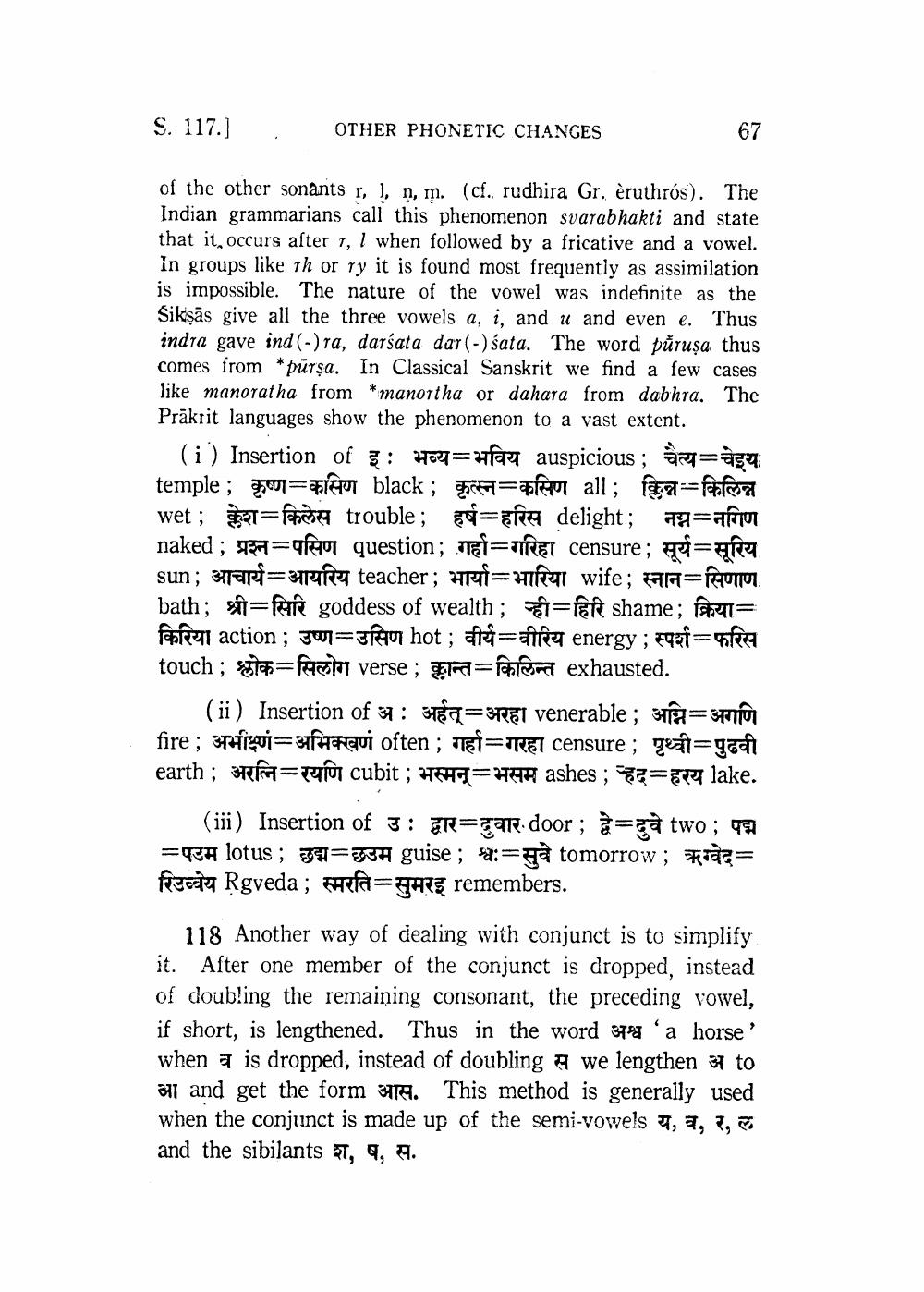________________
S. 117.]
OTHER PHONETIC CHANGES
of the other sonants r, I, n, m. (cf. rudhira Gr. eruthrós). The Indian grammarians call this phenomenon svarabhakti and state that it,occurs after 7, I when followed by a fricative and a vowel. in groups like th or ry it is found most frequently as assimilation is impossible. The nature of the vowel was indefinite as the Sikşās give all the three vowels a, i, and u and even e. Thus indra gave ind (-)ra, darsatadar (-) Sata. The word purusa thus comes from *pürşa. In Classical Sanskrit we find a few cases like manoratha from *manortha or dahara from dabhra. The Prākrit languages show the phenomenon to a vast extent.
(i) Insertion of इ : भव्य भविय auspicious ; चैत्य चेइय temple ; कृष्ण-कसिण black ; कृत्स्न=कसिण all; किन्न-किलिन्न wet ; केश=किलेस trouble; हर्ष हरिस delight; नग्न नगिण naked ; प्रश्नपसिण question; गर्दा=गरिहा censure ; सूर्य=सूरिय sun; आचार्य=आयरिय teacher; भार्या=भारिया wife ; स्नान-सिणाण bath; श्री सिरि goddess of wealth ; व्ही=हिरि shame ; क्रिया= किरिया action; उष्ण=उसिण hot ; वीर्य=वीरिय energy ; स्पर्श=फरिस touch ; श्लोक= सिलोग verse ; क्लान्त=किलिन्त exhausted.
___ (ii) Insertion of अ : अर्हत् =अरहा venerable ; अग्नि=अगणि fire ; अभीक्ष्णं-अभिक्खणं often ; गर्हा=गरहा censure ; पृथ्वीपुढवी earth ; अरनिरयणि cubit ; भस्मन्=भसम ashes ; हद-हरय lake.
(iii) Insertion of उ : द्वार=दुवार door ; द्वे=दुवे two ; पद्म =परम lotus ; छद्म-छउम guise ; श्व:-सुवे tomorrow; ऋग्वेद रिउव्वेय Rgveda ; स्मरति=सुमरइ remembers.
118 Another way of dealing with conjunct is to simplify it. After one member of the conjunct is dropped, instead of doubling the remaining consonant, the preceding vowel, if short, is lengthened. Thus in the word अश्व ‘a horse' when 9 is dropped, instead of doubling we lengthen 37 to 311 and get the form F1. This method is generally used when the conjunct is made up of the semi-vowels य, व, र, ल and the sibilants श, ष, स.




